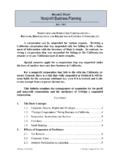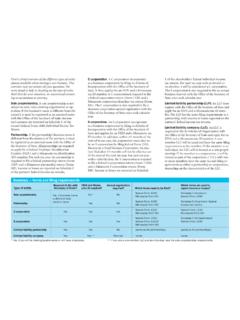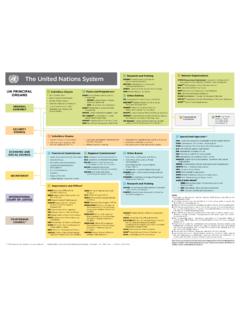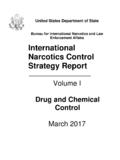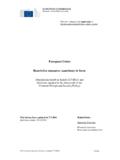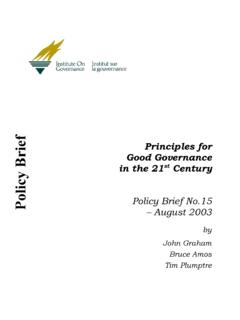Transcription of Dissolvong Busienss Entities and Corporate …
1 072913:0827 DISSOLVING BUSINESS Entities AND Corporate housekeeping William C. Staley, Attorney 818 936-3490 LOS ANGELES CHAPTER, CALIFORNIA SOCIETY OF ENROLLED AGENTS July 9, 072913:0827 DISSOLVING BUSINESS Entities AND Corporate housekeeping Table of Contents PART I DISSOLVING BUSINESS Entities 1. KEY DISSOLUTION CONCEPTS .. 1 2. OVERVIEW OF THE VOLUNTARY DISSOLUTION PROCESS .. 2 3. DISSOLUTION AND TAXES .. 3 4. THE ZERO TAX LIQUIDATION OF AN S CORPORATION .. 12 5. PRESERVING NOLS IN A SUB-INTO-PARENT LIQUIDATION .. 14 6. DISSOLUTIONS AND Corporate LAW .. 15 7. DISSOLVING PARTNERSHIPS .. 21 8. DISSOLVING LLCS, PCS, LLPS AND CLOSE CORPORATIONS .. 22 9. THE MERGER ALTERNATIVE .. 23 10. KEEPING THE NAME .. 24 Part II - Corporate housekeeping 11. STOCK CERTIFICATES .. 24 12. MINUTES .. 25 Copyright 2013 All rights reserved William C. Staley, Attorney 6303 Owensmouth Avenue, 10th Floor Woodland Hills, CA 91367 (818) 936-3490 This outline should be viewed only as a summary of the law and not as a sub-stitute for tax or legal consultation in a particular case.
2 Your comments and questions are always welcome. 072913:0827 DISSOLVING BUSINESS Entities AND Corporate housekeeping William C. Staley1 818 936-3490 PART I DISSOLVING BUSINESS Entities 1. Key Dissolution Concepts Liquidation Business sense turning assets into cash Tax sense a process of ending the life of an entity Liquidating distributions are made during the liquidation There can be a de facto liquidation3 Dissolution A Corporate law term meaning the formal end of the life of an entity4 No such thing as a de facto dissolution A suspension or forfeiture is a similar but different concept5 1 Louis E. Michelson, Esq. provided helpful comments on an earlier draft of this outline. 2 331, 332, 336, 337, 6043. 3 Rev. Rul. 61-91, 251. 4 Cal. Corp. Code 1808(b), 1905(b). 5 Cal. Corp. Code 2205, 2206.
3 072913:0827 -2- William C. Staley 818-936-3490 The existence of the corporation generally creates the obligation to pay a franchise tax for the privi-lege of having a corporation, whether or not it is Actual dissolution ends the obligation to pay the California minimum Corporate tax, unless the corpo-ration continued to do business after filing its certif-icate of 2. Overview of the Voluntary Dissolution Process Board approves plan of liquidation and submits it to the Shareholders adopts the plan liquidation process Corporation files Form 966 with Corporation pays its debts and makes liquidating distributions to 6 Cal. Corp. Code 23151(a), (f). 7 Cal. Rev. & Tax. Code 23153(a), (g), 23332(c) (no minimum tax due for period following period for which a final tax return is filed, of no business is done in the following period and a certificate of dissolution is filed within 12 months after the final return is filed); Cal.
4 Admin. Code, title 18, Rule 23151. 8 The board of directors is not required to approve the plan, but it generally does so. In some situations the board can act without shareholder approval. Cal. Corp. Code 1900(b). 9 Cal. Corp. Code 1900(a). Under the pre-1986 version of Section 337, there was extensive case law on what constituted the adoption of a plan of liquidation for federal income tax purposes. 10 6043(a)(1); Treas. Reg. (a). 11 Cal. Corp. Code 2004. 072913:0827 -3- William C. Staley 818-936-3490 Corporation dissolves and files final tax returns generally liqui-dation process Corporation can be sued for up to four years and can quiet title in real property at any The last officers serves as ghost officers and the last agent for service of process serves as a ghost agent for service of process (these are my own terms).
5 14 3. Dissolution and Taxes Inside tax The liquidating corporation s assets are deemed to be sold at FMV when distributed to the Exception: Section 332/337 liquidation of a subsid-iary. See Section below. Cash method receivables are realized if distributed in (The symbol indicates traps for the un-wary.) Outside tax Liquidating distributions are taxed to shareholders as if the shares were sold for a price equal to the FMV of the dis-tributed 12 Cal. Corp. Code 1905(b); 6072(b); Rev. Rul. 71-129, 1971-1 397. The officers should consider requesting a prompt assessment of any federal in-come tax due. 6501(d). 13 Cal. Corp. Code 2011(a)(2)(B), (c). 14 Cal. Corp. Code 2010, 2011. 15 336(a). There are special rules for distributed property subject to a liability ( 336(b)) or for losses on liquidating distributions ( 336(d)(1)(A)).
6 16 Because the corporation has a zero basis in them. 072913:0827 -4- William C. Staley 818-936-3490 A shareholders gain is reduced by his or her basis in the shares; low long-term capital gain rates can Earning and profits are meaningless for liqui-dating distributions, which are not divi-dends. 19 If it s really a liquidation-reincorporation, the distributions are taxable as ordinary divi-dends and basis is not applied to reduce the amount of the Shareholders take a fair market value basis in the distributed property21 File Form 966 with the IRS to evidence that a plan of liq-uidation has been adopted by the shareholders and that subsequent distributions will be liquidating distribu-tions. 22 (footnote continued from prior page) 17 331(a).
7 18 1(h); Treas. Reg. (b). 19 331(b); Treas. Reg. (c).. 20 See B. Bittker & J. Eustice, FEDERAL INCOME TAXATION OF CORPORATIONS & SHAREHOLDERS (WGL), , (7th ed. 2012) ( Bittker & Eustice ). 21 334(a). 22 See fn. 10 above. 072913:0827 -5- William C. Staley 818-936-3490 Open transaction treatment allows a shareholder to ap-ply all basis to the first gain, if total gain on liquidation is The IRS does not like open transaction treatment, but the courts allow it when no other way of apply-ing share basis to the liquidating distributions makes sense. Section 332 Liquidation of a Subsidiary into a Parent No outside gain to Corporate parent in a Section 332 liqui-dation of a Corporate parent must own at least 80% of the out-standing stock of the Minority shareholders in the sub do recognize gain on their liquidating Distributing subsidiary has no gain on Carryover basis in the distributed assets The parent s basis in the subsidiary stock disap-pears!
8 28 Because a QSub election by an S corporation parent is treated as a Section 332 dissolution, the 23 See Rev. Rul. 58-402, 1958-2 15. For an analogous reporting regime, see the rules for contingent payment sales in Temp. Treas. Reg. (c) (1981). 24 332(a). 25 332(b). 26 331(a); Treas. Reg. 27 337(a). 28 334(b)(1). 072913:0827 -6- William C. Staley 818-936-3490 outside basis in the subsidiary s stock disappears in a QSub election, If the parent recently bought the stock of the subsidiary, and the subsidiary has a low basis in its assets, consider alternatives to the disso-lution. Consider having the seller of the target corpo-ration make a Section 338 election to cause the tax basis of the assets of the target to in-crease to the value of target s Or, if the parent has not yet bought the stock of the target corporation, consider having the shareholders of the parent acquire the target stock.
9 That is, consider a brother-sister structure and not a parent-subsidiary struc-ture. To preserve the basis in the stock. The subsidiary s tax attributes (including NOLs) carry over to the parent in a good Section 332 liquidation. 31 It is possible to have a liquidation or merger of a 80% or more subsidiary into its parent that fails to qualify for Sec-tion 332 treatment (a bad Section 332 liquidation). The liquidation or merger would fail to qualify if the subsidiary is indebted to the parent for more than the value of the subsidiary s 29 Treas. Reg. (a)(2). 30 338(g), (h)(10). 31 381(a)(1). 32 See, , Treas. Reg. (d), Example 5; see Bittker & Eustice at [2]. 072913:0827 -7- William C. Staley 818-936-3490 The transfer of assets from the subsidiary to the parent would not be a distribution with respect to the stock, but would be in partial satisfaction of the debt.
10 Gain possible for the subsidiary if it transfers appre-ciated assets. Parent might have bad debt deduction for unsatisfied debt of subsidiary to parent. No carryover basis. All of the subsidiary s tax attributes disappear including its S corporations Key concept - Outside share basis increases for every dol-lar of inside income or gain and decreases for losses and Non-liquidating distributions might be tax-free distribu-tions of S corporation earnings35 so defer the liquida-tion? Not usually. The basis in the shares will reduce the outside gain. But if the liquidating distributions would be spread over more than one year, consider deferring adopting a plan of liquidation until the year in which the final distributions are planned. 33 See Preserving NOLs in a Sub-into-Parent Liquidation below at Sec-tion 5. 34 1367(a).

